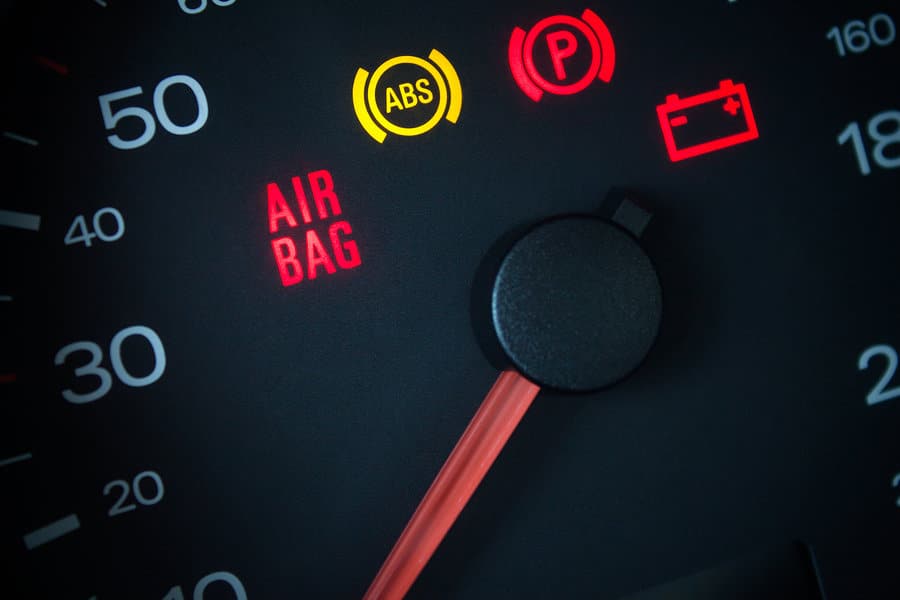
Not everyone who drives a car can be a mechanical whizz. And let’s face it, the days of lifting your car up on ramps at the weekend and having a tinker under the hood are on their way out, with many vehicles having extensive computer control systems.
Fortunately, car designers have provided a way for every motorist to know what’s happening around the car regardless of their vehicular knowledge – the dashboard lights. But what does each light mean and what action should you take when the light illuminates on your dash?
In this article, we look at each type of dashboard light ranging from those that present a dire warning if avoided through to those that are less urgent. Use this guide to get acquainted with each type of light so you can understand the implications, should it become illuminated.
Table of contents:
Severe Warning – Red Light
These are the more serious problems with your car that you need to act upon immediately. Should one of these lights illuminate on your dashboard it may not necessarily mean that your car is in trouble, or that it will cost a lot of money to fix, but rather that if you do not get it checked out then the knock on effects could cause substantial damage to your vehicle.
Brake Light
Symptom – brake light coming on once you have released your vehicle’s handbrake.
Causes – this could be down to a simple lack of fluid within the brake system or a sign of problems with a number of other systems including a brake sensor, anti-lock brakes (ABS) or the electronic stability control (ESP). One danger sign that should not be ignored is if the pedal feels spongey or depresses all the way to the floor with no resistance.
Actions
- A brake light coming on in your car is the most serious warning sign, requiring your immediate action.
- Park the car in a safe and traffic free zone.
- Use the vehicle handbook or the web on your phone to find out the location of your brake fluid reservoir.
- Top up the car with brake fluid to the max line on the reservoir
If the light still does not go out following this remedial action
- Take your car to dealer or garage as soon as possible or if you do not feel safe driving call a towing company.
Airbag Warning Light
Symptoms – the airbag warning light comes on after starting the car or whilst driving.
Causes – there is a problem within the airbag system that could mean that the airbag will not deploy properly in the advent of a crash, or worst still, could fire unexpectedly when you are driving on the open road.
Actions
- Stop your car as soon as you can find a safe parking place.
- Turn all the engine systems off.
- Take the car into a qualified service centre or dealer, where the airbag system can be inspected and changed in accordance with your warranty or service agreement.
Temperature Warning Light
Symptoms – the light will illuminate whilst you are out on the road, indicating that the engine is overheating.
Causes – your car is getting dangerously hot and continuing to drive could result in an engine failure. The most likely reasons for this issue include some kind of problem or blockage within the car’s coolant system, a blocked radiator, a faulty water pump, or in a worst case scenario, a blown head gasket.
Actions
- Find a safe place to park your car as soon as possible
- Turn off the engine and allow the vehicle to cool down
- Open the bonnet of the car to allow cold air to circulate around the engine
- Do not add cold water to a very hot engine as this can cause damage
- Once the car has cooled sufficiently then check the engine coolant levels
- If necessary fill the coolant up to the required level on the reservoir
- If you find that the overheating light comes on again stop the car and call a mechanic or garage and do not continue driving.
Oil Warning Light
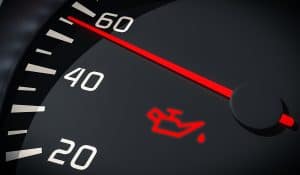
Symptoms – your oil pressure light will come on when you are driving, or will not go out after you have started your car.
Causes – this light illuminates when the oil pressure drops. This could be down to a leak in the system, too much or too little oil, or a faulty pump. Failing to act upon this light could cause a costly failure within your engine and is one of the most serious warnings that your vehicle is in trouble.
Actions
- Stop your car as soon as possible and park it in a safe place
- Allow your car to cool down and open the bonnet of the car
- Check your engine’s oil level using the dipstick
- If the oil needs to be filled up use the correct oil in accordance with your owner’s manual
- If you do not have any oil then call the garage or mechanic to come out and top up the oil for you.
- Should the oil level be correct and the light is still coming on then do not attempt to drive the car.
Battery Charge Warning Light
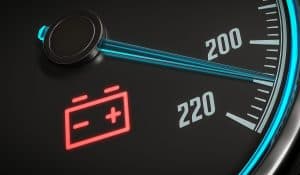
Symptom – normally, the battery light will illuminate when the ignition is turned on and then go out once the car is started. If it fails to illuminate when starting the car, or if it comes on whilst you are driving, then the battery is not charging properly.
Causes – this could be down to a simple problem with the car battery needing charging to get the power levels back to normal. However, it could equally indicate a more elusive problem within the vehicle’s wiring, especially if your car is now getting older. More serious problems include a fault with the alternator or drive belt.
Actions
If your car hasn’t started
- Use jump leads to get enough charge in the car to get started.
- Drive car for sufficient time for the alternator to charge the battery.
- Alternatively take the car battery to a service centre to be charged.
If whilst driving
- Turn off all secondary electrical systems immediately like the radio and the air conditioning.
- Stop the car as soon as possible.
- Check the terminals on the battery and ensure the wiring is properly fixed in place
- If you cannot see any problems with the wiring do not start the car as the problem is likely to be the alternator or drive belt. In such an instance call a mechanic or garage.
Mild Warning – Amber Light
If one of these lights shows it means that you should take caution when driving the car and something needs urgent attention. If one of these lights comes on when you are on the road, you probably still have time to get to a garage or mechanics, and potentially do not need to stop straight away, but should still take urgent remedial action.
ECU – Engine Warning Light / Engine Management Light
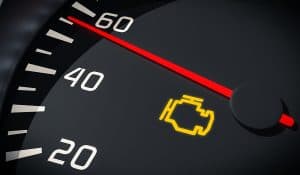
Symptom – engine warning light coming on or flashing intermittently as you are on the road.
Causes – this indicates a problem within the engine’s system. It could be anything from a problem with the turbocharger, the fuel injection system or even the basic ignition system. Depending on the severity of the problem, you should be able to drive on reduced power until you can investigate further.
Actions
Flashing Light
- Reduce speed until the light goes out
- If the light will not stop flashing, stop the car and turn off the engine
- Call a mechanic or garage to check out the vehicle
Continuous Light
- Stop your vehicle as soon as it is safe to do so
- Switch off your car and allow it to rest for a minimum of 2-3 minutes
- Restart your engine
- If your engine warning light is now off, it should be safe to drive
- Otherwise call a garage or mechanic to come out and check the vehicle
Power Steering Light
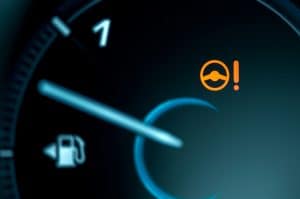
Symptom – after starting the car the power steering light illuminates on the dashboard.
Causes – usually the culprit is a loss of pressure within the power steering fluid system or there could be a more serious problem with the electronics.
Actions
- Stop the car in a safe place to park
- Switch off the car and leave to rest for a few minutes, removing the ignition key
- Start the car and see if the light has now extinguished
- If the light is still on then check the levels of fluid within the power steering system and top up if necessary
- If you need to continuously top up the fluid this indicates a leak within the system
Diesel Particulate Filter
Symptoms – this light will regularly illuminate on the dash to indicate that the diesel particulate filter (DPF) needs cleaning.
Causes – the DPF is there to catch and store little pieces of soot and dirt, stopping them from exiting the engine system as harmful emissions into the atmosphere. Your car is designed to empty your DPF automatically at high speeds, when the exhaust heats up to the required speed to effectively burn off the soot. However, if you have only been driving at low speeds in a stop-start urban environment the DPF may not have been clearing properly from the system.
Actions
- Take your car out onto the open road, dual carriageway or motorway
- You should be able to clear the blockage by driving at a sustained speed on a motorway or A-road for 30-50 minutes to clear the filter.
- Check your owner’s manual or the internet for more information if a good spell behind the wheel does not clear the filter, causing the light to go out.
Tyre Pressure Warning Light
Symptoms – the tyre pressure warning light illuminates on your dashboard whilst driving or fails to extinguish after ignition.
Causes – this could be down to a problem or slow puncture within one of the tyres, which will affect your vehicle’s on the road grip, especially during cornering or on rougher road surfaces. In the cold weather, the tyre pressure is also likely to drop, which could trigger this light until the tyres warm up.
Actions
- Check the tyres for problems visually
- If the tyre is deflating rapidly you have a flat or punctured tyre
- Replace the tyre or use the fix kit within your car to resolve the issue
If you do not have a flat tyre:
- Take your vehicle to the nearest garage or service facility
- Check your owner’s manual or the internet to determine the correct tyre pressures
- Set the correct pressure level on the air supply system at the garage
- Use the system to inflate your tyres to the correct level of pressure
- If the light is still coming on after inflating your tyres you have a slow puncture
A Final Word
There are many other dashboard lights that are specific to different makes and models of car, such as ABS lights, transmission warning lights and even seatbelt lights on newer vehicles.
As a rule of thumb, it is always best to react to any warning light immediately as failure to do so can often result to further damage to your car, or could increase your risk of having difficulties on the road. Always act on the side of caution.


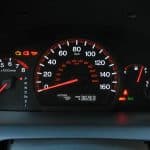








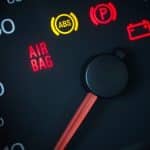

.png)